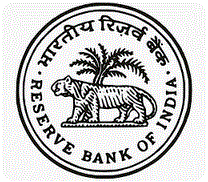RBI Projects Robust Economic Growth in India, Expects Q1 GDP Growth at 7.6%
In its economic activity index nowcast, the Reserve Bank of India (RBI) predicted a robust GDP growth rate of 7.6% for the first quarter of the fiscal year 2023–2024 (Q1 FY24). According to the central bank`s research, the domestic economic situation in India has maintained the pace shown in the preceding quarter of FY23. The RBI`s index, which measures the economy as a whole, shows continued resilience. This essay explores the major elements causing this optimistic perspective and identifies possibilities for improvement.
The RBI’s economic activity index reflects a sustained quickening of momentum in India’s domestic economic conditions. Despite the challenges posed by the pandemic, the country’s overall economic activity has shown resilience. Partial data available for April 2023, coupled with an assumed GDP growth rate of 5.1% for Q4 FY23, has led to the projection of a robust 7.6% GDP growth for Q1 FY24, according to the RBI’s monthly bulletin.
Strong Corporate Earnings
Corporate earnings in India have surpassed consensus expectations, with notable performance seen in the banking and financial sectors. These sectors have been bolstered by robust credit growth, contributing to strong revenue performance overall. The positive performance of corporate earnings is a key driver of the projected growth in the first quarter of FY24.
Private Consumption and Manufacturing
The RBI anticipates that growth in the first quarter of FY24 will be primarily driven by private consumption. Reviving rural demand and renewed buoyancy in manufacturing, aided by the easing of input cost pressures, are expected to support this growth. Lead indicators, such as mandi arrivals and cumulative procurement of wheat, indicate the possibility of a record-breaking rabi harvest, which would provide a significant boost to the rural economy.
Record-Breaking Rabi Harvest
The central bank highlights that based on current indicators, the rabi harvest may achieve a new record in terms of production. This anticipated record harvest is expected to contribute substantially to the rural economy, providing a further stimulus to overall economic growth. Mandi arrivals of paddy during the Kharif marketing season have reached their highest level in eight years. Although mandi prices of paddy remain slightly lower than the minimum support price, retail prices are showing an upward trend, complemented by positive global rice prices and an increase in India’s rice exports.
Improvement in Investment Activity
The RBI expects investment activity to improve, primarily driven by increased capital expenditure in public spending and a moderation in commodity prices. With manufacturing capacity utilization at trend levels, private capital spending will play a crucial role in adding additional capacity as demand continues to pick up. This investment boost is poised to further strengthen the overall economic growth trajectory.
###
India`s GDP Growth Accelerates to 6.1% in Q4 2022-23, Propelling Economy to $3.3 Trillion
With a GDP growth rate of 6.1% in the January–March 2022–2023 quarter, India`s economy saw notable expansion. This increase resulted in an annual growth rate of 7.2%, which was principally fueled by improved performance in the agriculture, manufacturing, mining, and construction sectors. The Indian economy reached $3.3 trillion thanks to strong growth, which also paves the way for it to accomplish the ambitious $5 trillion goal in the future years.
GDP Growth Highlights
The National Statistical Office (NSO) released official data confirming the noteworthy growth achieved by the Indian economy in the first quarter of 2022-23.
Key Points:
- Q4 2022-23 GDP Growth: The GDP growth rate in the March 2023 quarter was recorded at 6.1%, reflecting a steady expansion from the previous quarters. The growth rates for October-December 2022 and July-September 2022 stood at 4.5% and 6.2%, respectively.
- Annual Growth Rate: The economy grew by 7.2% in 2022-23, taking into account the cumulative growth throughout the fiscal year. This was slightly lower than the previous fiscal year’s growth rate of 9.1% in 2021-22.
- Comparative Growth with China: In the first three months of 2023, China registered an economic growth rate of 4.5%, highlighting India’s relatively higher growth trajectory.
###
RBI Launches ‘100 Days 100 Pays’ Campaign to Settle Unclaimed Deposits
The `100 Days 100 Pays` programme, recently launched by the Reserve Bank of India (RBI), aims to locate and pay the top 100 unclaimed deposits of every bank in every district within a 100-day time frame. The RBI is continuing its efforts to lower the amount of unclaimed deposits in the banking system and ensure their proper return to owners or claimants as part of this programme. The RBI intends to raise awareness of the problem of unclaimed deposits and aid in its resolution by launching this campaign.
Unclaimed deposits refer to funds that have remained untouched or inactive for a period of ten years or longer. When such deposits exhibit no activity, banks transfer the funds to the “Depositor Education and Awareness” (DEA) Fund, which is maintained by the RBI. However, depositors retain the right to claim their deposits, along with applicable interest, from the bank(s) where these deposits were held, even after they have been transferred to the DEA Fund.
The accumulation of unclaimed deposits primarily occurs due to several reasons. One common reason is the non-closure of savings or current accounts that depositors no longer intend to operate. Additionally, depositors may fail to submit redemption claims for matured fixed deposits, leading to the transfer of funds to the DEA Fund. There are also instances where deposits belong to deceased individuals, and their nominees or legal heirs do not come forward to make a claim on the respective bank(s).
As of February 2023, the total amount of unclaimed deposits transferred to the RBI by public sector banks (PSBs) reached Rs 35,012 crore. Among the PSBs, the State Bank of India (SBI) holds the highest value of unclaimed deposits, amounting to Rs 8,086 crore, followed by Punjab National Bank with Rs 5,340 crore, Canara Bank with Rs 4,558 crore, and Bank of Baroda with Rs 3,904 crore.
To facilitate the claiming process, every bank is required to display details of unclaimed accounts on their websites, including identifiable information. Upon reviewing these details on the bank’s website, customers can visit the respective bank branch with a completed claim form, deposit receipts, and relevant Know Your Customer (KYC) documents to initiate the process of reclaiming their money.